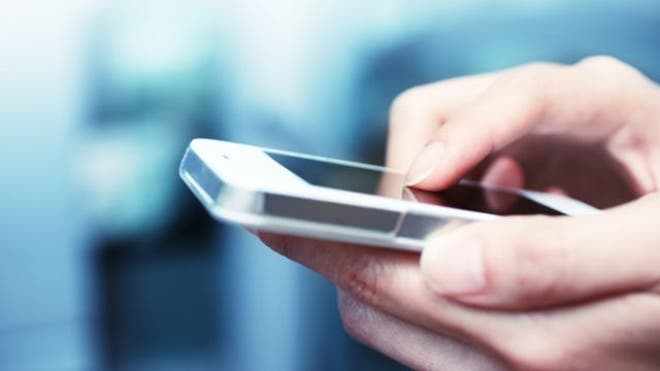
Opportunities, risks seen with dermatology apps
Mobile dermatology applications may help people learn about UV rays or keep tabs on their moles, but they are not a substitute for seeing a doctor, researchers said Wednesday.
They searched online stores and found over 200 dermatology apps, half of them made for non-doctors. Those included sunscreen recommendation guides, mole photo storage apps and tools meant to help diagnose melanoma.
“I am very hopeful that these applications will increase access to medical knowledge,” Dr. Robert Dellavalle, a dermatologist at the University of Colorado School of Medicine in Aurora, said.
However, “The biggest concerns are people getting the wrong information,” Dellavalle, the study’s senior author, told Reuters Health. Only a few of the apps were clearly made by medical professionals, the researchers noted.
The study follows an announcement by the U.S. Food and Drug Administration on Monday that it will regulate a subset of medical apps intended for doctors.
Those include apps that can “be used as an accessory to a regulated medical device,” such as one that would allow a doctor to make a diagnosis based on a photo sent via the app.
For their study, Dellavalle and his colleagues searched the Apple, Android, BlackBerry, Nokia and Windows app stores for products related to dermatology. They found 209 apps, including 10 with at least 35 reviews at the time.
The most frequently reviewed apps made for the general public included Ultraviolet ~ UV Index (bit.ly/14S9caG), SPF (bit.ly/16r6HBY), iSore (bit.ly/18pY0nh) and SpotMole (bit.ly/18pMavp).
Of those, Ultraviolet ~ UV Index currently has the highest reviewer ranking at between 4 and 5 on a 5-star scale. The app shows the UV index for the user’s current location.
SPF calculates how much time a user can be in the sun based on skin type and UV index, and iSore has a directory of skin conditions with a “graphic picture” and treatment information. SpotMole is designed to check photos of moles for signs of cancer.
About half of the apps were free. The rest cost an average of $2.99, the researchers reported Wednesday in JAMA Dermatology.
They said both patients and doctors should “maintain a healthy sense of skepticism” when it comes to using dermatology apps. That is especially true for apps that claim to help spot conditions such as skin cancer and could delay a real diagnosis.
For instance, a recent review of smartphone apps that use algorithms to analyze skin lesions found they weren’t always good at predicting which ones were cancerous (see Reuters Health story of January 16, 2013 here: reut.rs/13EoYqz).
IMPROVING PATIENT ACCESS
Some of the most promising apps are ones that connect patients in remote areas to dermatologists, such as through video chats, Dr. Karen Edison, a dermatologist from the University of Missouri in Columbia, said.
The researchers found eight of those so-called tele-dermatology apps.
Dermatologists are in short supply in many parts of the country, Edison, who wasn’t involved in the new research, said.
“I think it’s time to use technology to make us more available,” she told Reuters Health.
“I support the use of technology in getting access to dermatology expertise for patients who would not otherwise have access to that expertise as well as for convenience for patients … if it can be done in a high-quality way that takes patient safety into account.”
She said it’s important for doctors evaluating remote patients to know if they have access to medication or can see a dermatologist in person to do a biopsy, if necessary. That means an app that relies just on sending pictures and diagnoses back and forth, for instance, isn’t likely to be very helpful, Edison said.
Dellavalle said the world of dermatology apps is currently a “buyer-beware atmosphere.”
He recommended patients cross-reference information they get from apps with other resources and talk with their doctor before making any treatment decisions based on apps.
Source:



 Researchers have said that becoming obese or remaining lean can depend on the dynamics of the mitochondria, the body’s energy-producing “battery.”
Researchers have said that becoming obese or remaining lean can depend on the dynamics of the mitochondria, the body’s energy-producing “battery.”


 1. Behind-the-Head Lat Pulldowns
1. Behind-the-Head Lat Pulldowns The Alternative: You can still work your lats without the risk of behind-the-head pulldowns by pulling the bar down in front of you. Sit with your spine straight, abs pulled in, and then lean your torso back slightly, keeping your spine straight. Pull the bar down towards your chest, but not below your collar bone.
The Alternative: You can still work your lats without the risk of behind-the-head pulldowns by pulling the bar down in front of you. Sit with your spine straight, abs pulled in, and then lean your torso back slightly, keeping your spine straight. Pull the bar down towards your chest, but not below your collar bone. 2. Squats or Leg Presses with Deep Knee Bends
2. Squats or Leg Presses with Deep Knee Bends The Alternatives: Squats and leg presses are generally safe and effective when done properly. But you should never bend your knees or hips more than 90 degrees during these exercises. Here’s an example of proper form when doing a leg press machine, but this can apply to squats with a barbell, and the sled machine, too.
The Alternatives: Squats and leg presses are generally safe and effective when done properly. But you should never bend your knees or hips more than 90 degrees during these exercises. Here’s an example of proper form when doing a leg press machine, but this can apply to squats with a barbell, and the sled machine, too. 3. Seated Leg Extensions
3. Seated Leg Extensions The Alternatives: Simple
The Alternatives: Simple  4. Inner and Outer Thigh Machine Exercises
4. Inner and Outer Thigh Machine Exercises The Alternatives: The best way to target these muscles safely is with body weight exercises, such as standing adduction, standing abduction, lying adduction and
The Alternatives: The best way to target these muscles safely is with body weight exercises, such as standing adduction, standing abduction, lying adduction and  5. Upright Rows
5. Upright Rows The Alternatives: Instead of standing to perform an upright row, try bent-over rows, bending forward 90 degrees at the hip, holding weight down beneath your shoulders with hands slightly more than shoulder width apart, then lift weight straight up towards your chest until elbows and shoulders form a straight line. You can also try front or
The Alternatives: Instead of standing to perform an upright row, try bent-over rows, bending forward 90 degrees at the hip, holding weight down beneath your shoulders with hands slightly more than shoulder width apart, then lift weight straight up towards your chest until elbows and shoulders form a straight line. You can also try front or 
 A 5-year-old Long Island girl is credited with saving her mother’s life.
A 5-year-old Long Island girl is credited with saving her mother’s life. The number one selling sunscreen in the U.S. natural markets, W.S. Badger Company, has voluntarily recalled 30,000 of its baby and kids’ sunscreen lotions because of potential disease-causing bacteria.
The number one selling sunscreen in the U.S. natural markets, W.S. Badger Company, has voluntarily recalled 30,000 of its baby and kids’ sunscreen lotions because of potential disease-causing bacteria.